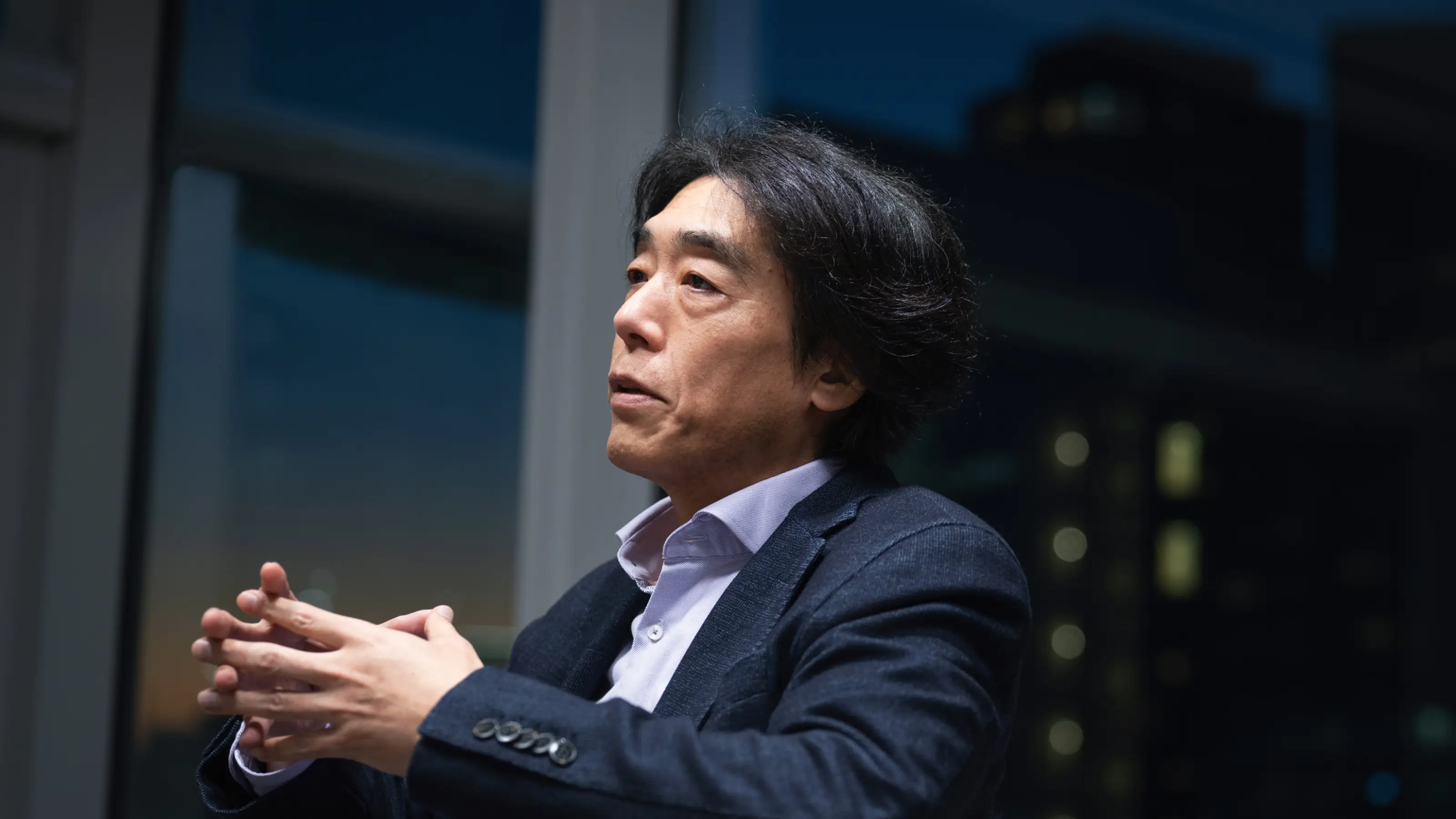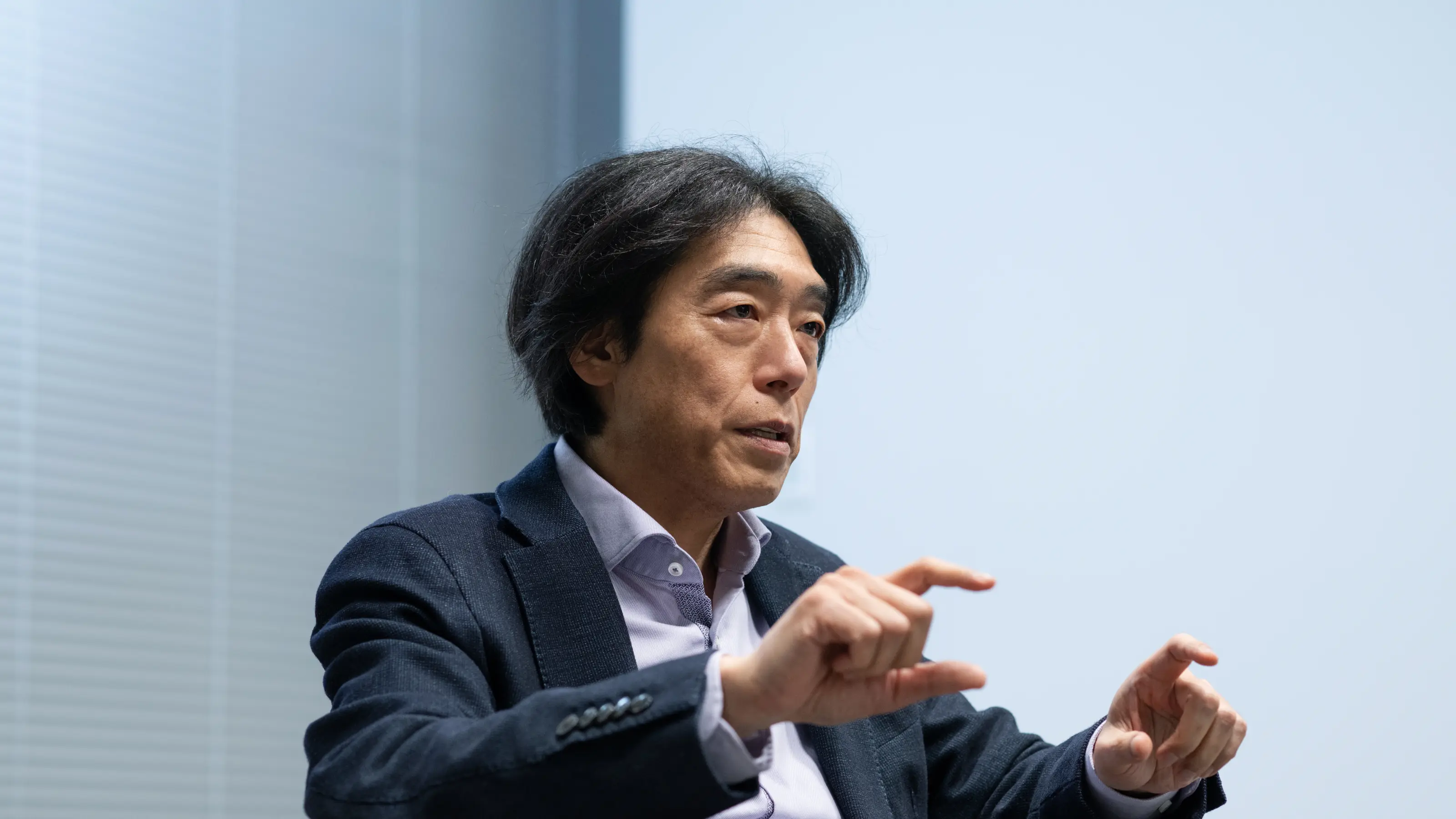Inner Voice Vol.2【Part 1】 Engineers who have lived and breathed computers and networks dare to envision betting/visioning the future of mobility.
Izumi Kawanishi, Representative Director, President and COO of Sony Honda Mobility, is responsible for leading AFEELA’s technology.
His experience on the PlayStation® and Xperia™ teams, as well as with Sony’s AI Robotics division, made him the perfect candidate to develop AFEELA’s technology and concepts.
AFEELA: an automotive evolution through software and networking, but what exactly does its future hold? Many may still find it difficult to foresee what kind of future it will bring from an external perspective.
While we can’t divulge all the details, the anticipation is palpable. While it might be too soon for everything to come to light, it is still intriguing.
So what will it be like? We went directly to Kawanishi for a hint as we followed his background and experience up to the birth of AFEELA.
IT journalist Munechika Nishida, who has interviewed Kawanishi many times over the past 20 years, conducted the interview.

- Mr. Kawanishi, you have worked on the PlayStation and the aibo at Sony. What projects did you start your career with?
After joining Sony, the first product I worked on was the 8-bit standardized home computer MSX, a personal computer for hobbyists, which we developed under the HiTBiT brand. In fact, as a student, I worked part-time at a computer-related publishing company, so I have been doing these types of things for a long time. - At that time, the PC-related business must have been an exceptional division within Sony.
It was a time when the entire consumer electronics industry had yet to define itself, so we treated anything computer-related as a new business. - And then, at the end of 1994, Sony launched Sony Computer Entertainment (SCE), now Sony Interactive Entertainment, Inc., which released the PlayStation. You have been with SCE for a long time, Kawanishi-san. When did you start with this division?
I joined SCE the year after the launch of the original PlayStation — a significant turning point for the PlayStation was the introduction of 3D graphics. At the time, it was only available in game arcades. I realized I could use my experience, so I requested a transfer. - What did you do at SCE?
I did many things but with the original PlayStation, my main job was providing development support for game developers. With the PlayStation® 2 I started to get involved in the development of game console hardware. At that time, so-called ‘broadband networks’ were beginning to emerge, marking the dawn of networking.
Following that, I took charge of the portable gaming console known as the PSP. We implemented features such as WiFi networking, system software updates, and content downloads, essentially realizing a platform-like system as demanded by current IoT devices. Concurrently, I also worked on the development of the PlayStation® 3 which involved creating a gaming console based on an architecture utilizing a multi-core processor called CELL and NVIDIA’s GPU. - When you think about it, you have been involved with computers and networks all your life.
The network-centric approach is a natural evolution from the PC perspective, and the transition from PCs to other devices is also a noble concept. We’ve explored Sony consumer electronics products’ possibilities for a long time.
At that time, there weren’t many details that networked home appliances could change. We didn’t understand networking like we do today, so one simple network set up was quite a hussle. also, it was difficult to set up. I think we had to consider how best to create a fit with the general public.

- Subsequently, Mr. Kawanishi, you were involved in developing smartphones and launched the aibo in 2018, the prototype EV VISION-S in 2020, and the professional drone Airpeak in 2021.
At CES 2020, Sony’s key message was From Mobile to Mobility.
The advent of the smartphone, or mobile technology had a great impactimpact on many people’s lifestyles. The combination of mobile features and computers shifted paradigms. I believed the next trend would be mobility.
The point was to have something mechanical that worked intelligently, using computing power. We entered the world of robotics. The common theme here was ‘autonomy’ or things that think and act automatically on their own. - It’s a little funny that one of them was an aibo.
Of course, there were all kinds of discussions (laughs).
After all, there are many engineers who love robots at Sony. Among them, aibo is a symbol, and it was a time when AI and robotics technologies were just beginning to attract people’s attention, so we decided to go for it.
Naturally, we next talked about evolving it into a biped or humanoid, alongside possibilities of industrial robots. Also, with so many people at Sony, many said they wanted to make a drone.
While we went back and forth with different directions to take our robotics evolution, there arose the possibility of EVs.
And that’s what we did.
Many EV components are electrical. Vehicle control is also increasingly software-based.
And, we felt that that was something Sony could do.
We concluded that the development of EVs was the best direction to go. Looking closely at Mr. Kawanishi’s career from the beginning, it’s easy to see the inevitable direction of EVs. His experience as an engineer in personal computer systems, game platforms, and AI robotics will power the drive to create a car that changes the world with networking and software.
Continued in Part 2: “What does President and COO Izumi Kawanishi envision for the ‘Car That Changes with Software’?“
Writer : Munechika Nishida